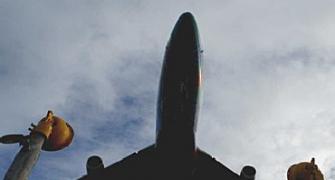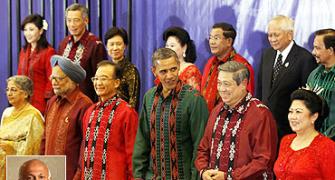 The commercial aviation sector in India and West Asia is expected to achieve overall annual growth of 9 per cent and 10 per cent, respectively, for several years to come and will account for 11 per cent of the total aircraft deliveries worldwide over the next decade.
The commercial aviation sector in India and West Asia is expected to achieve overall annual growth of 9 per cent and 10 per cent, respectively, for several years to come and will account for 11 per cent of the total aircraft deliveries worldwide over the next decade.
A new report by aviation intelligence firm OAG and UBM Aviation, reveals a striking contrast of opportunities and challenges in two of the world's fastest-growing travel markets.
The OAG India and Middle East Aviation Market Analysis bases its projections on the consistently growing demand for air travel, a surge in aircraft orders, steadily increasing inbound tourism, spectacular airport development plans and the enthusiasm of investors for the sector.
"However, both markets face immense challenges in meeting the expected future growth in passengers and aircraft operations, which require massive expansion of infrastructure and high-performing aviation systems," the report said.
In India, the government's open-sky policy has enticed many foreign aviation leaders to enter the market, spurring rapid industry expansion boosted by the growing population and increased demand for international travel and trade, as well as an increasing visiting friends and relatives) market, the report said.
However, airlines must contend with insufficient infrastructure and challenging political bureaucracy in India.
"It is estimated that in the next decade, the Indian market will absorb approximately 316 commercial jets and need three times the number of airports that it has today, whilst at the same time, the country doesn't have enough skilled labour to maintain or to fly the aircraft," the report, which was released here, said.
"Additionally, intense foreign competition prevents domestic carriers from international expansion, deeply affecting balance sheets," it said.
Mario Hardy, vice president -- Asia Pacific, UBM Aviation, said: "India is amongst the world's most promising
"Skilled aviation personnel in developed nations with stuttering economies may want to look East for opportunities, but the region is not without risk -- there is significant progress yet to be made in airport modernisation, aircraft maintenance, pilot training and air cargo services," he said.
"It remains to be seen whether the Indian aviation industry can handle the region's relentless growth, with its West Asian, oil-rich neighbours all too keen to take on more capacity with new fleets of super-jumbos based in the Gulf and hundreds more on order," Hardy said.
The OAG market analysis of India and West Asia concludes that in order to cut costs, boost efficiencies and spur competition, mergers of the more than 30 competing airlines in West Asia and India will be necessary.
However, mergers of West Asian carriers are unlikely in the short-term because most are government-owned and, therefore, more likely to form alliances because of the geographical proximity of many of the carriers, including Saudi Arabia Airlines, Qatar Airways, Gulf Air, Fly Dubai, Emirates Airlines and Etihad Airways, all being within 500 miles of each other.
These alliances can offer carriers opportunities normally afforded by a merger, such as access to new routes and efficiency savings.
In India, the first step toward carrier consolidation is already complete. On June 1, 2011, the merger control provisions of the Competition Act, 2002, were brought into effect, allowing 'acquisitions of one or more enterprises by one or more persons or merger or amalgamation of enterprises.'
While this is a significant milestone, companies undertaking mergers or acquisitions must prepare for the challenges; with more competition in the aviation market, fares will soon be slashed and the resulting low margins will not cover all expenses and costs, which will create a situation where many domestic airlines will simply stop operating.







